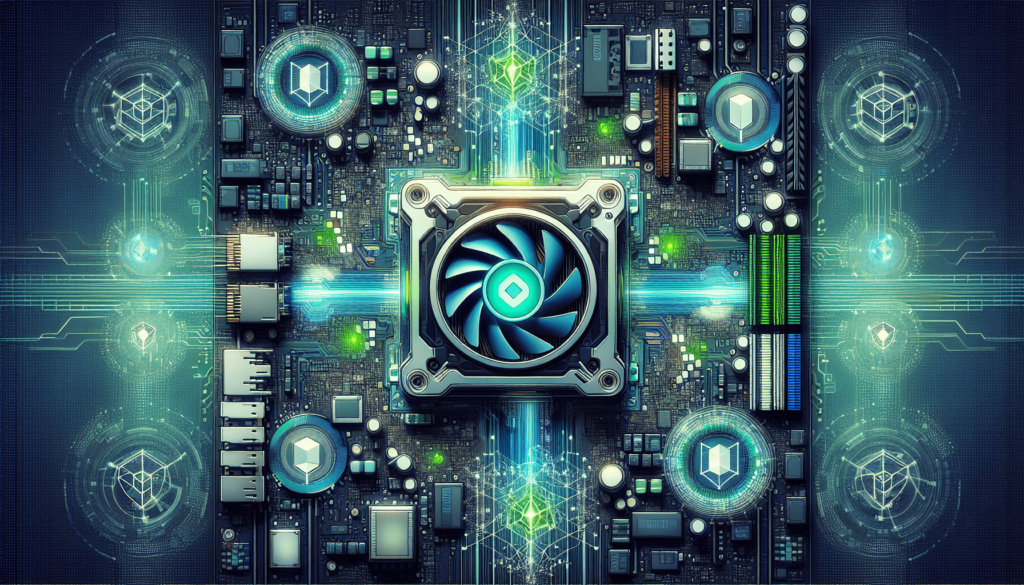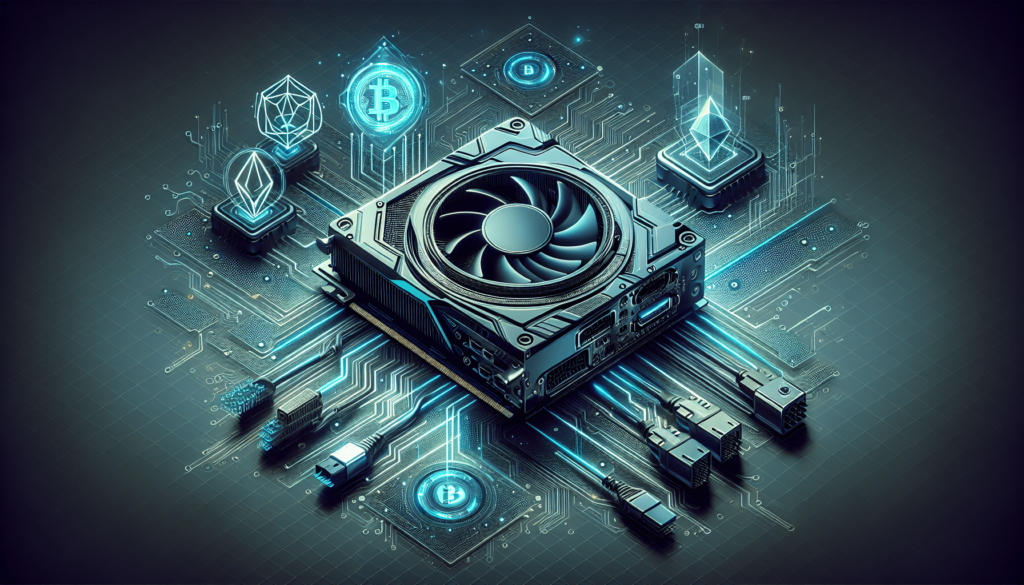Have you ever considered what it takes to dive into the world of cryptocurrency mining? You’ve likely heard of Bitcoin, Ethereum, or other cryptocurrencies that have captivated the financial world’s attention. But mining them? That might seem like an enigmatic world filled with complex jargon and intricate technology.
However, mining cryptocurrencies doesn’t have to be a mystery. With the proper guidance and a friendly hand, you can learn to navigate through this innovative landscape. Whether you’re a complete beginner or have a basic understanding, this guide is crafted just for you to smooth out the complexities and make mining an approachable and rewarding endeavor.

What is Cryptocurrency Mining?
At its simplest, mining cryptocurrencies is akin to digging for digital gold. Only instead of pickaxes and shovels, you use specialized computers and algorithms. In essence, mining involves solving complex computational problems that validate and secure transactions on a blockchain—an immutable digital ledger that records all cryptocurrency transactions.
Mining: The Backbone of Blockchain
Think of mining as the heartbeat of the blockchain network. Without miners, the blockchain would cease to function. Miners consume computational power to solve cryptographic puzzles. When they solve a puzzle, they validate a block of transactions, which is then added to the blockchain. For their efforts, miners are rewarded with newly created cryptocurrency coins and transaction fees. This not only incentivizes miners to keep the process going but also maintains the integrity and security of the entire network.
Proof of Work (PoW)
The concept of mining is primarily based on a consensus mechanism known as Proof of Work (PoW). PoW requires miners to prove that they have invested computational work—hence the term “work”—into solving the cryptographic puzzles. This system helps secure the network from attacks and ensures decentralization. In PoW-based systems, the more computational power you contribute, the higher your chances of solving the puzzle and earning the mining reward.
Getting Started: The Essentials
Before you can start mining, you need to gather a few essentials. This isn’t just about jumping in and hoping for the best; proper preparation can save you time, money, and effort.
Hardware Requirements
Depending on the cryptocurrency you intend to mine, hardware requirements can differ significantly. Here’s a basic rundown of the two most common types of mining hardware:
| Hardware Type | Description |
|---|---|
| CPU (Central Processing Unit) | Suitable for beginners due to lower costs but generally inefficient for most popular cryptocurrencies. |
| GPU (Graphics Processing Unit) | More efficient and popular for mining cryptocurrencies like Ethereum. Higher initial costs but better long-term rewards. |
| ASIC (Application-Specific Integrated Circuit) | Highly specialized and efficient, but also the most expensive. Typically used for Bitcoin mining. |
Software Requirements
Once you’ve secured the necessary hardware, the next step is to acquire the appropriate software. Here are some options based on the type of cryptocurrency:
| Cryptocurrency | Software Options |
|---|---|
| Bitcoin | CGMiner, BFGMiner |
| Ethereum | Claymore, Geth |
| Litecoin | CGMiner, EasyMiner |
Setting Up Your Wallet
Before you can either start mining or receive rewards, you’ll need a cryptocurrency wallet to store your mined coins. Think of a wallet as your digital bank account, where all your earnings are saved securely. There are various types of wallets, such as hardware wallets, software wallets, and even paper wallets. Each type has its pros and cons; however, it’s usually advisable to start with a software wallet for its ease of use.
Pool vs. Solo Mining
One more significant decision you’ll need to make is whether to mine solo or join a mining pool. Solo mining means you’re working independently to solve cryptographic puzzles. Pool mining means you are joining forces with other miners to solve puzzles collectively and share the rewards. For beginners, pool mining is often more practical as it offers more consistent payouts.
The Step-by-Step Mining Process
Alright, now that you have all your essentials ready, it’s time to get into the nitty-gritty of the mining process.
Step 1: Configure Your Hardware
To begin with, set up your mining rig. If you’ve opted for a GPU or ASIC setup, ensure that you have installed the necessary drivers and have connected all hardware components securely. Making sure your hardware is adequately cooled is vital, as mining tasks can generate a lot of heat.
Step 2: Install Your Mining Software
Next up, download and install the mining software suited for your chosen cryptocurrency and hardware. Follow the installation instructions closely, and once it’s installed, configure it to connect to your mining pool or, if you prefer, set it up for solo mining.
Step 3: Join a Mining Pool (Optional but Recommended)
If you decide to join a mining pool, you’ll find that most mining software requires you to enter the pool’s URL and your wallet address. This will ensure that any rewards you earn are deposited directly into your wallet. Research the best mining pools available for your chosen cryptocurrency to maximize your returns.
Step 4: Begin Mining
After setup and configuration, start your mining software to begin the mining process. Monitor performance and make any necessary adjustments to optimize efficiency. This could include tweaking settings such as hash rate or power consumption, depending on the performance metrics provided by your mining software.

Monitoring and Maintenance
Mining isn’t exactly a set-and-forget operation. You’ll need to regularly monitor your rig to ensure everything runs smoothly.
Performance Metrics
Understanding key performance metrics can help you gauge the efficiency of your mining operations. Some of the most important metrics to consider include:
| Metric | Description |
|---|---|
| Hash Rate | Measure of computational power. Higher hash rates mean better performance. |
| Power Consumption | Energy usage of your mining equipment. Balancing performance and energy costs is crucial. |
| Temperature | Keeping an eye on your hardware temperature will help you prevent overheating and hardware failure. |
Software Updates
Keeping your mining software and drivers up to date is crucial for security and performance. Updates often come with bug fixes, improved performance, and added security features.
Scalability
As you become more proficient, you may want to explore scaling up your operations. This could mean investing in more powerful hardware or expanding your mining rig. However, always assess the cost versus the potential returns before making significant investments.
The Economics of Mining
Understanding the economic aspects of cryptocurrency mining is crucial to ensuring your efforts are profitable.
Initial Costs and ROI
Starting with the right hardware and software will come with initial costs. These include the purchase of mining equipment, electricity costs, and possibly cooling solutions. Calculate your potential Return on Investment (ROI) by comparing these initial costs against your possible earnings.
| Cost Type | Approximate Range |
|---|---|
| Hardware (GPU/ASIC) | $500 – $20,000+ |
| Electricity | Varies by location and power consumption |
| Cooling Solutions | $100 – $1,000+ |
| Software/Other | May include mining pool fees, other miscellaneous costs |
Profitability Calculators
There are numerous online calculators available that can help you estimate the profitability of mining a specific cryptocurrency. These tools take into account factors like hash rate, power consumption, and electricity costs to give you an approximate profitability figure.
Tax Implications
Don’t overlook the tax aspect. Countries have varying regulations around cryptocurrencies, and mining often falls under some form of taxable income. Consult with a tax expert to make sure you meet all tax obligations and avoid potential legal issues.
Potential Risks and Challenges
Mining cryptocurrencies can be lucrative but also comes with inherent risks and challenges. Being aware of these will better prepare you for the ups and downs of this endeavor.
Market Volatility
Cryptocurrency prices are notoriously volatile, and shifts in market value can impact your profitability dramatically. While mining rewards can seem substantial, falling cryptocurrency prices could diminish those rewards’ actual value.
Regulatory Scrutiny
Regulations around cryptocurrencies are continually evolving. Changes in legal frameworks can impact mining operations, including restrictions or outright bans in certain jurisdictions. Staying updated on regulatory changes is crucial for sustained mining operations.
Technical Issues
Mining requires a dependable technical setup. Hardware failures, software bugs, and other technical glitches can disrupt your mining process. Having a basic understanding of troubleshooting common issues will go a long way in minimizing downtime.
Security Concerns
As you’re delving into mining, you’re also stepping into a space where cybersecurity threats are a reality. Always use strong, unique passwords and consider enabling two-factor authentication (2FA) for additional security. Regularly update your mining software to take advantage of the latest security patches.
Environmental Impact
Mining cryptocurrencies, especially through PoW mechanisms, can have a significant environmental footprint. Energy consumption is a major concern, particularly with larger mining operations.
Energy Efficiency
Choosing energy-efficient hardware and optimizing your mining setup can help mitigate some of this impact. Exploring renewable energy options like solar or wind can also be a viable way to reduce your carbon footprint.
Future of Eco-friendly Mining
Some new cryptocurrencies are adopting more eco-friendly consensus mechanisms like Proof of Stake (PoS), which requires significantly less computational power. Keeping an eye on these developments can provide insights into sustainable mining practices.
Alternative Mining Methods
If traditional PoW mining seems too daunting, you might want to explore alternative methods.
Cloud Mining
Cloud mining allows you to lease computational power from a third-party provider. This way, you won’t have to deal with hardware setup or maintenance. However, be cautious as the terms are usually less favorable, and the market is rife with scams.
Staking and Proof of Stake (PoS)
Staking involves holding a minimum number of cryptocurrency coins in a wallet to support network operations, validate transactions, and earn rewards. PoS is less resource-intensive than PoW and can be a simpler way for beginners to get involved in network validation.
Masternodes
Some cryptocurrencies offer masternodes—a form of full node that keeps a real-time copy of the blockchain. Operating a masternode requires a significant initial deposit of the cryptocurrency in question but can provide consistent rewards.
Community and Learning Resources
Mining can sometimes feel like a solitary endeavor, but you’re not alone. There are numerous communities and resources to help you along your journey.
Online Forums
Platforms like Reddit, BitcoinTalk, and crypto-specific forums are teeming with like-minded individuals who share tips, troubleshoot issues, and discuss market trends.
Social Media and Chat Groups
Cryptocurrency communities are quite active on social media platforms such as Twitter and Telegram. Joining these groups can keep you updated on the latest mining innovations and regulatory changes.
Courses and Tutorials
If you prefer structured learning, numerous online courses cover everything from the basics of blockchain technology to advanced mining strategies. Websites like Coursera, Udemy, and Khan Academy offer invaluable resources.
Final Takeaways
Embarking on the journey of mining cryptocurrencies can be both extraordinarily rewarding and equally demanding. While the learning curve can be steep, with the right information at your fingertips and the willingness to adapt and learn, you can turn mining from a daunting task into a profitable venture. Remember, the key is preparation, continuous learning, and community engagement. Armed with knowledge and determination, the world of cryptocurrency mining is yours to explore.

